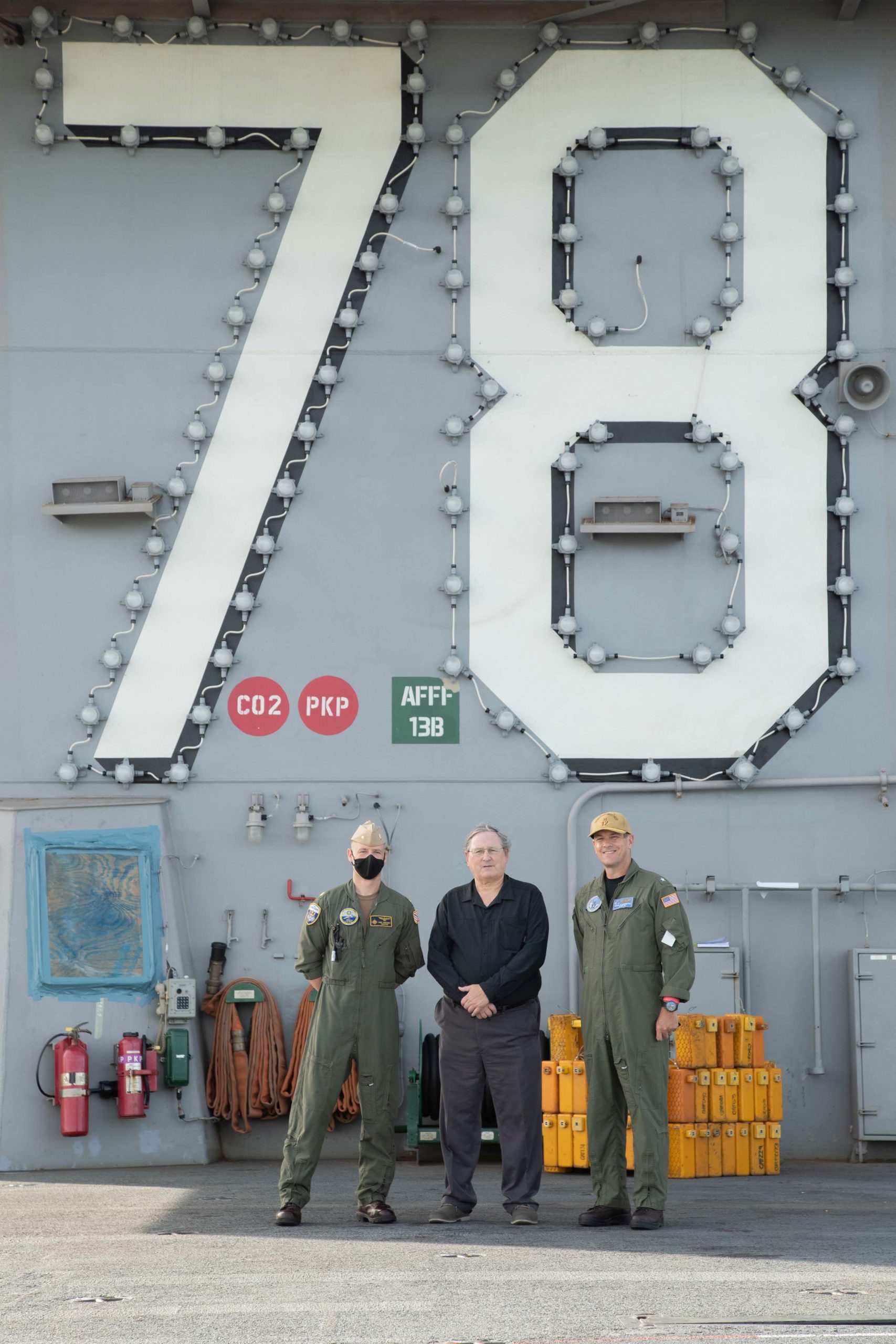By Robbin Laird
On Friday, October 9, 2020, I had a chance to visit the USS Ford and to get an update on the progress of this formidable warship.
Earlier, Ed Timperlake and I have visited the USS Ford in 2015 and discussed the next generation large deck carrier with the ship’s captain, John Meier. Now Captain Meier is Rear Admiral Meier, Commander, Naval Air Force Atlantic.
This article provides an overview for a series on the strategic context into which the USS Ford is entering and the reshaping of how the large deck carrier will operate with the integrated distributed force.
I will provide a series of articles looking at specific aspects of the ship which make it a next generation carrier and will highlight the discussions onboard the ship during my visit about those various aspects.
Although the USS Ford draws on the generations of experience operating large deck carriers, the USS Ford is no more a Nimitz class replacement than the F-35 is a replacement for legacy aircraft.
The ship has a number of capabilities which allow it to have substantial increases in sortie generation rates which allows the ship to deliver mix and match force packages into the expanded battlespace.
And these capabilities will work differently with the fleet, understood more broadly, as inclusive not only of the Navy but with the US Air Force and Marine Corps as well.
The airwing of the future understood as the integratable air wing, new approaches to working fleet wide combat integrability, enhanced capabilities to work with the various elements of the joint and coalition forces more effectively, reworking blue water expeditionary operations, and shaping kill web dynamic targeting options, all provide the strategic context within which the USS Ford will operate.
In other words, it is not just a new ship; it is a new blue water capability empowering maritime and air power to operate in ways symmetrical with the challenges of full spectrum crisis management.
As such, the ship will benefit from the various force structure changes which the United States and its allies are generating but it will also drive further changes in concepts of operations and capabilities as well.
In many ways, it is an untold story.
For most discussions of the USS Ford have revolved around the new systems onboard the ship; not what those capabilities enable both for the fleet and the joint and coalition force, and, in turn, how those capabilities enable the new ship to leverage innovations being shaped for operations in the extended battlespace by the joint and coalition forces.
This series will provide an initial attempt to shape that narrative and that story.
E2D Landing on USS Ford from SldInfo.com on Vimeo.
The featured photo highlights my visit to the USS Ford. On the left is Ford’s top catapult officer (TOPCAT) Lt. Cmdr. Andy Kirchert and to my right is Rear Admiral Craig Clapperton, Carrier Strike Group 12 commander.


